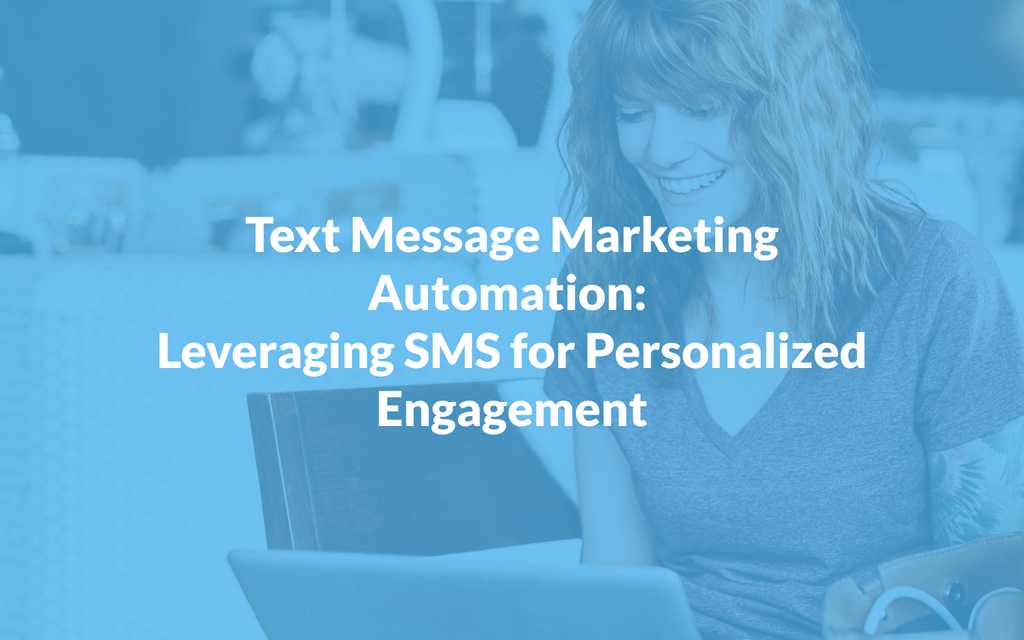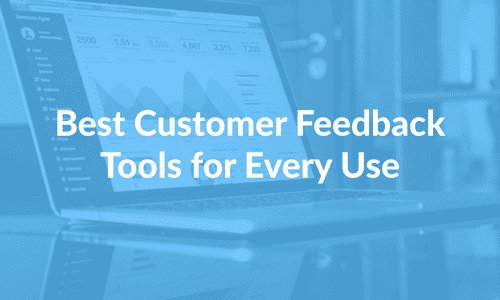Text message marketing today is an important marketing channel for businesses to connect with their customers. With marketing automation in place, text messaging is a game-changer for small businesses, saving time and effort.
But with so many options out there, how do you choose the right tool for your small business?
That’s where we come in. Our guide walks you through SMS marketing automation, making it easy to understand and implement the same for your business. From why it’s important to how it benefits your business, we’ve covered everything that you need to know. So, let’s dive in:
Understanding Text Message Marketing
Short Message Service or SMS marketing involves sending text messages, alerts, updates, and promotions to customers via texts on their phone numbers. Primarily, SMS marketing was used for either to chat with family and friends or transactional purposes, such as order confirmations or appointment reminders.
However, it has evolved into a powerful marketing tool, enabling businesses to engage with their audience in a more direct and personalized manner. With advancements in technology, such as AI and automation, businesses can now automate and streamline their SMS marketing campaigns for greater efficiency and effectiveness.
Key Statistics and Trends in SMS Marketing
Looking to dive into the world of SMS marketing? Curious about the numbers behind its success? You’ve come to the right place. Here’s a sneak peek into some key SMS marketing statistics and trends:
1. The SMS marketing industry is booming, expected to reach a staggering $12.6 billion by 2025.
2. 94% of people open and read most text messages they receive.
3. 81% of the US population is comfortable opening an SMS from a business.
4. SMS marketing lists are 10 times more valuable than email marketing lists.
These statistics shed light on the immense potential of SMS marketing in today’s digital landscape. With high engagement rates and growing market size, it’s clear that SMS is a force to be reckoned with in the marketing world.
What is Marketing Automation?
Marketing automation refers to the use of software and technology to automate repetitive tasks and workflows. It streamlines marketing activities and processes, such as email & SMS marketing, social media posting, lead nurturing messages, customer segmentation, and others.
This allows businesses to efficiently engage with their audience at scale. By automating these tasks, marketers can save time, improve efficiency, and deliver more personalized experiences to their customers.
Benefits of Marketing Automation in Text Message Marketing
In text message marketing, automation offers several key benefits:
- Increased Efficiency: Marketing automation eliminates the need for manual execution of repetitive tasks. This enables businesses to send targeted SMS campaigns to their audience effortlessly.
- Personalization: Automation tools enable marketers to create highly personalized SMS messages based on customer data and behavior, leading to improved engagement and conversion rates.
- Timely Communication: With automation, businesses can schedule SMS messages to be sent at optimal times, ensuring that they reach their audience when they’re most likely to engage.
- Improved ROI: By automating SMS marketing campaigns, businesses can achieve higher ROI by delivering relevant messages to the right audience segments, resulting in increased conversions and revenue.
Leveraging SMS Automation for Personalized Engagement
Here are a few examples of SMS automation for personalized engagement:
Segmentation
Divide your audience into segments based on demographics, behavior, or preferences. This allows you to tailor your messages more effectively to each group’s specific interests and needs.
Example: “Hey [Name], we’ve noticed you’re a frequent shopper at our store! As a valued customer, here’s an exclusive discount just for you: [Discount Code]. Happy shopping!”
Data Collection
Collect as much relevant data as possible from your customers to personalize your messages. This can include past purchase history, browsing behavior, location, and more.
Example: “Hi there! We noticed you recently purchased [Product]. How are you liking it so far? Reply with a rating from 1 to 5, with 5 being the best!”
Personalization Tokens/Fields
Use personalization tokens or merge fields to insert dynamic content into your messages, such as the recipient’s name, recent purchase, or upcoming appointment. This adds a personalized touch that can significantly increase engagement.
Example: “Happy Birthday, [first]! To celebrate your special day, here’s a gift from us: [Birthday Discount]. Enjoy!”
Automated Triggers
Set up automated triggers based on specific actions or events, such as abandoned carts, birthdays, or subscription renewals. This ensures timely and relevant communication with your customers.
Example: “Oops! It looks like you left something in your cart. Complete your purchase now and enjoy free shipping on us!”
Drip Campaigns
Create drip campaigns that deliver a series of messages over time, gradually nurturing leads and guiding them through the customer journey. Personalize each message based on the recipient’s interactions and preferences.
Day 1: “Welcome to our community, [first]! Get started with 10% off your first purchase using code WELCOME10.”
Day 3: “Did you know we offer free returns? Shop worry-free and discover our latest arrivals today!”
Day 7: “Last chance to use your welcome discount, [first]! Don’t miss out on this exclusive offer. Shop now!”
A/B Testing
Experiment with different message content, timing, and calls to action through A/B testing to determine what resonates best with your audience. Continuously refine your approach based on the results.
Variation A: “Hurry! Limited stock is available. Shop now and save 20% with code SAVE20.”
Variation B: “Unlock VIP access to our exclusive sale! Use code VIPSALE for 25% off your order. Ends soon!”
Opt-In and Opt-Out Processes
Ensure compliance with regulations such as TCPA by implementing clear opt-in and opt-out processes. Respect your customers’ preferences and provide easy ways for them to manage their subscription settings.
Example 1: “Welcome to our SMS club! Reply with YES to receive exclusive offers and updates. Msg & data rates may apply. Reply STOP to opt-out.”
Example 2: “Sorry to see you go! You’ve been unsubscribed from our SMS updates. If you change your mind, simply reply YES to resubscribe.”
Integration with CRM
Integrate your SMS automation platform with your CRM system to centralize customer data and streamline communication workflows. Utilizing CRM with text messaging enhances your communication strategy, enabling you to deliver more personalized messages based on a comprehensive understanding of each customer’s history and preferences.
Example: “Hi [Name], it’s been a while since your last visit. We’ve missed you! Come back and enjoy 15% off your next purchase. Use code COMEBACK15.”
Feedback Loops
Encourage feedback from your customers through surveys or interactive messages. Use this feedback to refine your messaging strategy and improve the overall customer experience.
Example: “We’d love to hear from you! How would you rate your recent experience with us? Reply with a number from 1 to 5, with 5 being the best.”
Analytics and Reporting
Monitor key metrics such as open rates, click-through rates, and conversion rates to evaluate the effectiveness of your SMS campaigns. Use this data to optimize your approach and maximize engagement over time.
Example: “Thank you for shopping with us, [first]! Your feedback helps us improve. Stay tuned for more exciting offers coming your way soon!”
Criteria for Selecting the Right SMS Automation Tools
When selecting SMS automation tools for your marketing efforts, it’s crucial to make an informed decision to ensure they align with your business needs and objectives. Here’s a comprehensive guide to help you navigate the selection process:
- Ease of Use: You want to opt for SMS marketing software that is intuitive and user-friendly. Complex systems can be time-consuming and costly to implement, requiring extensive training for your teams. Look for a solution with a simple interface that allows for easy setup and management without the need for expert assistance.
- Budget Considerations: Set a budget for your SMS marketing tool investment, taking into account not only the initial purchase cost but also installation and ongoing maintenance expenses. While cost is important, prioritize value over price to avoid compromising on quality or features.
- Scalability: Choose a tool that can grow with your business. Consider your future needs and select a scalable SMS marketing solution that can accommodate increased messaging volumes and additional users without the need for frequent upgrades or replacements.
- Audience Reach: Look for SMS marketing software that enables you to reach a wide audience. Ensure the platform supports and facilitates future expansion and maximize your outreach potential.
- Integration Capabilities: Select a tool that integrates seamlessly with your existing business applications, such as CRM systems and e-commerce platforms. Compatibility with your current infrastructure will streamline workflows and enhance operational efficiency.
- Security Features: Prioritize security when choosing SMS marketing software to safeguard your data against cyber threats and unauthorized access. Look for features such as encryption, automatic updates, and antivirus protection to mitigate potential risks and ensure data integrity.
- Customer Reviews: Research online reviews and testimonials from other users to gauge the reliability and performance of the SMS automation tools you’re considering. Positive feedback indicates customer satisfaction and can help you make an informed decision.
- Expert Support: Choose a vendor that offers expert technical support to assist you with setup, troubleshooting, and ongoing maintenance. Access to knowledgeable support staff can help address any issues promptly and ensure the smooth operation of the SMS automation tool.
- Trial Period: Take advantage of trial periods or demos offered by SMS automation tool providers to test the functionality and suitability of the software before making a final decision. Hands-on experience will help you assess whether the tool meets your specific requirements and objectives.
Best Practices and Tips for Effective SMS Marketing Automation
Let’s get to know some best practices and tips for effective SMS marketing automation:
1. Timing and Frequency of Messages
Determine the optimal times for sending messages based on your audience’s behavior and preferences. Avoid bombarding customers with too many messages by spacing them out and considering their time zones. Use automation to schedule messages for specific times, such as reminders for upcoming events or promotions.
2. Creating Compelling Calls-to-Action (CTAs)
Craft clear and concise CTAs that encourage immediate action from the recipient. Use actionable language and incentives to motivate customers to engage with your message. Experiment with different CTAs and analyze their effectiveness to refine your approach over time.
3. Monitoring and Analyzing Campaign Performance
Regularly track key metrics such as open rates, click-through rates, and conversion rates to assess the success of your campaigns. Use analytics tools to gain insights into customer behavior and preferences, allowing you to refine your targeting and messaging strategies.
Continuously monitor campaign performance and make data-driven decisions to optimize your SMS marketing efforts.
4. Maintaining a Balance Between Automation and Personalization
While automation can streamline your marketing processes, ensure that your messages retain a personal touch. Use customer data to personalize messages with relevant content and offers, enhancing the overall customer experience.
Strike a balance between automated messages and manual interactions to maintain authenticity and build stronger relationships with your audience.
Conclusion
In essence, SMS automation isn’t just a tool—it’s a pathway to more meaningful and impactful customer interactions. Embrace it, refine your strategies, and watch as your engagement and success soar.
From increasing sales to building brand loyalty, SMS automation presents a myriad of opportunities for businesses to engage their audience effectively. As technology continues to evolve, incorporating SMS automation into your marketing strategy can be a game-changer, enabling you to stay ahead in the ever-changing landscape of digital marketing.


